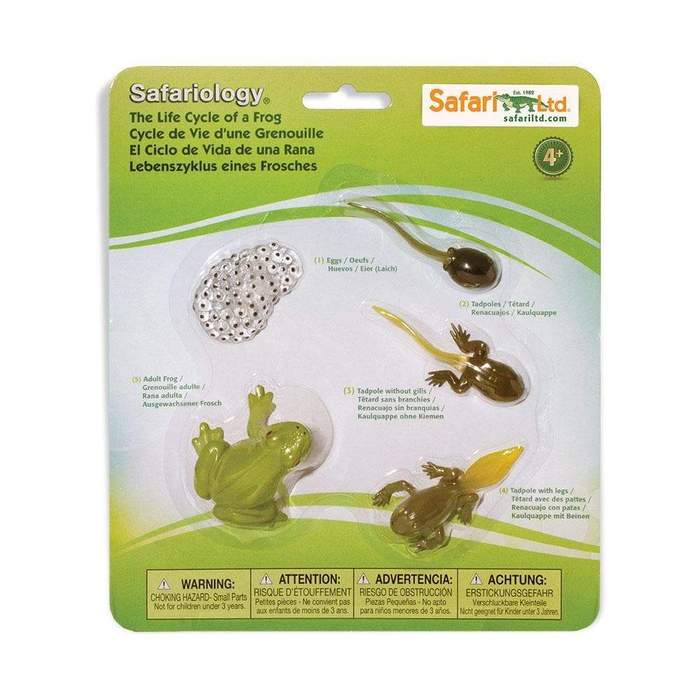When my big girl started prep last year they did an awesome unit on butterflies where they got caterpillar eggs and kept them in their classroom. The kids got to watch them go through the life cycle all the way to butterflies and it was a great hands on way for them to learn about life cycles. After they did that I started thinking about creative ways I could teach other animal life cycles at home {without actually keeping live animals}.
There are many other ways to teach animal life cycles like drawings, puzzles and books, however I wanted to think of something more hands on. Then I found the Safari Ltd life cycle of a frog figurine set and knew I could easily turn that into a fun small world for the girls. A frog life cycle small world was a great way to physically show them the life cycle of frogs, without having to actually keep {or touch, eww} real tadpoles and frogs.
WHAT ARE THE STAGES OF THE GREEN TREE FROG LIFE CYCLE?
The life cycle of a frog is most commonly broken down into five different stages: egg - tadpole - tadpoles with leg - froglet - adult frog
An adult frog lays up to 1500 eggs at a time which then group together with the clear jelly like substance albumen and float on the water surface until they hatch. The eggs will hatch between 1-3 weeks into tadpoles. Once hatched the tadpole will first develop gills, then legs. It will then grow arms and become a froglet and finally it will absorb its tail back into its body to become an adult frog. The entire process takes approximately 12 weeks from eggs to adult frog. The Safari frog life cycle set is a great way to visually represent the frog life cycle to younger children.
HOW TO CREATE A GREEN TREE FROG LIFE CYCLE SMALL WORLD PLAY TRAY
WHAT YOU WILL NEED
- Water
- Play tray
- Blue food colouring {optional}
- Frog life cycle figurines
- River stones {large}
- Small pebbles
- Foam Lily pads
- Leaf garland
To put together our frog small world I used our trusty Kmart drinks tray, a pack of small river rocks and a few large river rocks, the safari frog life cycle set, an artificial floating lotus flower, a huge leaf I picked from the neighbour's garden that looks like a lily pad and some water with a few drops of blue food colouring. Once I set it up I also wrapped an ivy leaf garland around the tray so it looked like a little pond in the middle of a wetland area. You may notice we were missing the tadpole in our small world, that's because my darling children had lost it somewhere and we still haven't found it.
Everything I used for our small world we already had in our stash at home but most of it came from dollar stores and I got the frog life cycle set online. To set up the tray I placed the rocks first then added the water to the level I wanted {I always try and keep it quite shallow because I know it'll get splashed}. I then placed the lily pad and lotus and finally the figurines. I put them all in areas they are likely to be found in a real pond so it was as realistic as possible and we could discuss where each of them are usually found.
LEARNING OPPORTUNITIES
- Frog habitat facts
- Frog life cycle stages
- Language development
- Hypothesising
- Imaginary play
- Sensory play
The girls both loved the small world. Even though it was primarily set up for my 6yr old, my youngest ended up playing with it for a long time after her sister was done. She spent ages engaging in lots of imaginary play with the frog and babies. And splashing, there was lots of splashing, despite there only being a small amount of water. The only thing I would change is to use a little less blue food colouring next time, or possibly just plain water because she had blue stained hands after playing in the water for over half an hour {but it was totally worth it because she had so much fun}.
LEARN ALL ABOUT FROGS WITH THESE EDUCATIONAL FROG BOOKS
Disclosure - this post contains some affiliate links which means I may earn a small commission, at no extra cost to you, should you make a purchase.














